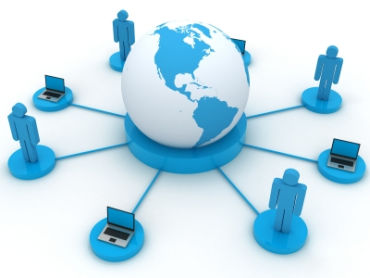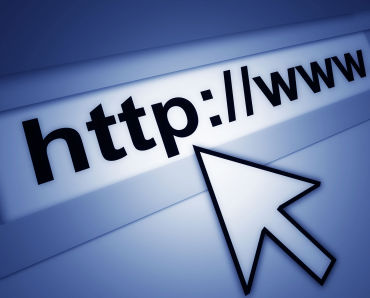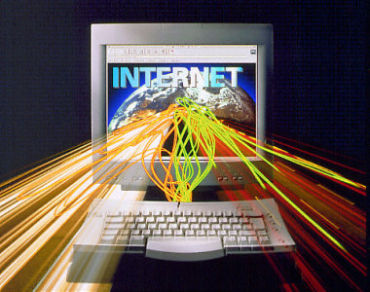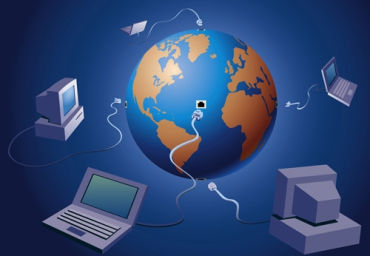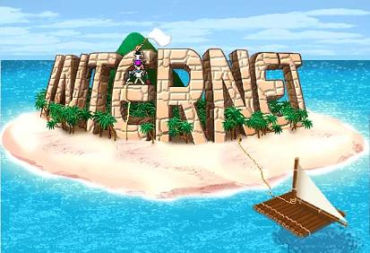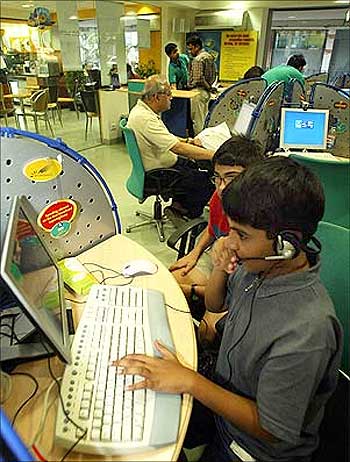 | « Back to article | Print this article |
Internet gives more to India's GDP than China's
In India, a strong trade balance powers the impact of the Internet. Net foreign trade accounts for 47 per cent of the total economic contribution from the Internet. BRIC stands for Brazil, Russia, India and China.
Click NEXT to read more...
Internet gives more to India's GDP than China's
Internet's contribution to the GDP of China in 2009 was 2.6 per cent.
However, what is a matter of concern for India and China is that the Internet consumption in these countries were primarily driven by export of Internet services instead of local consumption.
"In every country except China and India, private consumption accounted for about half or more of the contribution, peaking at 69 per cent of the total in South Korea or more than 70 per cent in Brazil and Russia," said the report.
Click NEXT to read more...
Internet gives more to India's GDP than China's
The US is the largest player in the global Internet supply ecosystem, capturing more than 30 per cent of revenues and more than 40 per cent of net income.
India leads the growth component of the McKinsey Internet Supply Leadership Index. For example, Bangalore registered 50 patents to 200 in fours years, compared to Singapore, which took six years to cross this threshold.
Click NEXT to read more...
Internet gives more to India's GDP than China's
Since the 1990s, Internet has grown leaps and bounds with about two billion users worldwide now. This number is growing by 200 million each year.
This means, almost a third of the global population connects to the Internet every day and almost $8 trillion a year is spent through e-commerce.
In the European Union alone, about two-thirds of all businesses have a web presence.
Click NEXT to read more...
Internet gives more to India's GDP than China's
Looking at the past five years, the contribution to GDP growth reaches 11 per cent. These results are reflected at a microeconomic level, too.
McKinsey surveyed more than 4,800 small and medium enterprises in 12 countries (excluding Brazil) and found that those utilising web technologies grew more than twice as fast as those with a minimal presence.
The results hold across all sectors of the economy.
Allaying to the usual fears that increasing use of Internet and automation result in job losses, the study found the Internet was a powerful catalyst for job creation.
Click NEXT to read more...
Internet gives more to India's GDP than China's
A detailed analysis of the French economy showed that while the Internet destroyed 500,000 jobs over the past 15 years, it created 1.2 million others - a net addition of 700,000 jobs.
This means, 2.4 jobs were created for every job destroyed, said the report.
The report also stated that the wealth generated by Internet reaches well beyond pure players in the industry as is commonly believed.
Click NEXT to read more...
Internet gives more to India's GDP than China's
Considering usage of the Internet has a direct link to growth, the study recommends policy makers and businesses to consider pushing for increased Internet usage, strengthening supply ecosystems, and opening public-private dialogue.
"The research shows that markets with low usage rates fail to capture the web's economic potential.
Use by individuals, businesses, but also government agencies stimulates the ecosystem in a number of ways, leading to increased contribution to GDP.
Click NEXT to read more...
Internet gives more to India's GDP than China's
To develop a strong Internet ecosystem, public and private attention should focus on supply and in particular on four areas critical to the development of the network: Human capital, financial capital, infrastructure, and business environment.
Bangalore is one such example. The city accounts for about one-third of the exports of IT services from developing countries to developed countries.
Its competitive position is premised on: building human capital advantage.
Click NEXT to read more...
Internet gives more to India's GDP than China's
It has invested in infrastructure like software technology parks, introduction of incubators and datacom services, setting up of convenient locations for new companies.
The city has also nurtured financial capital, said the report.
Among other economic benefits, the Internet offers increased productivity, opportunities to expand reach into domestic and foreign markets and rapid deployment of game-changing ideas.
The report said that 75 per cent of the value additions created using Internet were done by traditional industries in manufacturing, retail and automotive sectors.
